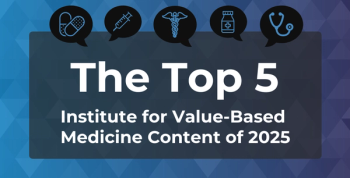
Considerations for Real-World MM Treatment: Ajai Chari, MD
Because clinical trials do not mimic the real-world application of multiple myeloma treatments, Ajai Chari, MD, discussed the variety of patient factors clinicians should consider in their practice.
While much attention has been given to the merits and potential of triple and quadruple therapy in
In this interview with The American Journal of Managed Care®, Chari explores how these components can shape therapy decisions beyond the confines of clinical trials.
This transcript has been lightly edited for clarity; captions were auto-generated.
Transcript
Are there any key patient factors clinicians should consider before administering triple or quadruple therapy vs other treatments?
In general, when we think about selecting a regimen in any oncologic indication, you have to think about patient factors, disease factors, and treatment factors. We just alluded to the
If a patient can't move quickly, then that's a sign. There's emerging data about doing a gait speed test, for example. And if you're not moving quickly, you might be at higher risk of blood clot with some of the drugs that we use that cause thrombosis, like [immune-modulating drugs].
When it comes to the disease factors, we still have not overcome high-risk disease: [International Staging System stage 3], high-risk genetics. Those might be patients who would want to consider quadruplet [therapy], even if they're an older patient, because the myeloma might be the great limiting issue in their lifespan. On the other hand, somebody who's a very standard risk [and] has minimal symptoms may not necessarily need a quadruplet for long.
The last point I'll make is, one of the challenges we have when we extrapolate clinical trial data in the real world is that, in general, parental drugs are probably only given for 50% to 60% of the duration of study drugs. We have these beautiful phase 3 studies published in the New England Journal of Medicine, but then when you go to the bedside in the clinics, no one's giving that duration of therapy. We have to really ask some of these new quadruplet studies that give twice-weekly bortezomib [Velcade] for 6 months, less frequently, or for a year and a half, “Are you really going to ask your older patients to be doing that for that long?” And my guess is, probably not.
I think making sure that dosing, schedule visits, time toxicity, [and] financial toxicity are the things to think about that are also being considered when we treat our myeloma patients.
Newsletter
Stay ahead of policy, cost, and value—subscribe to AJMC for expert insights at the intersection of clinical care and health economics.







































